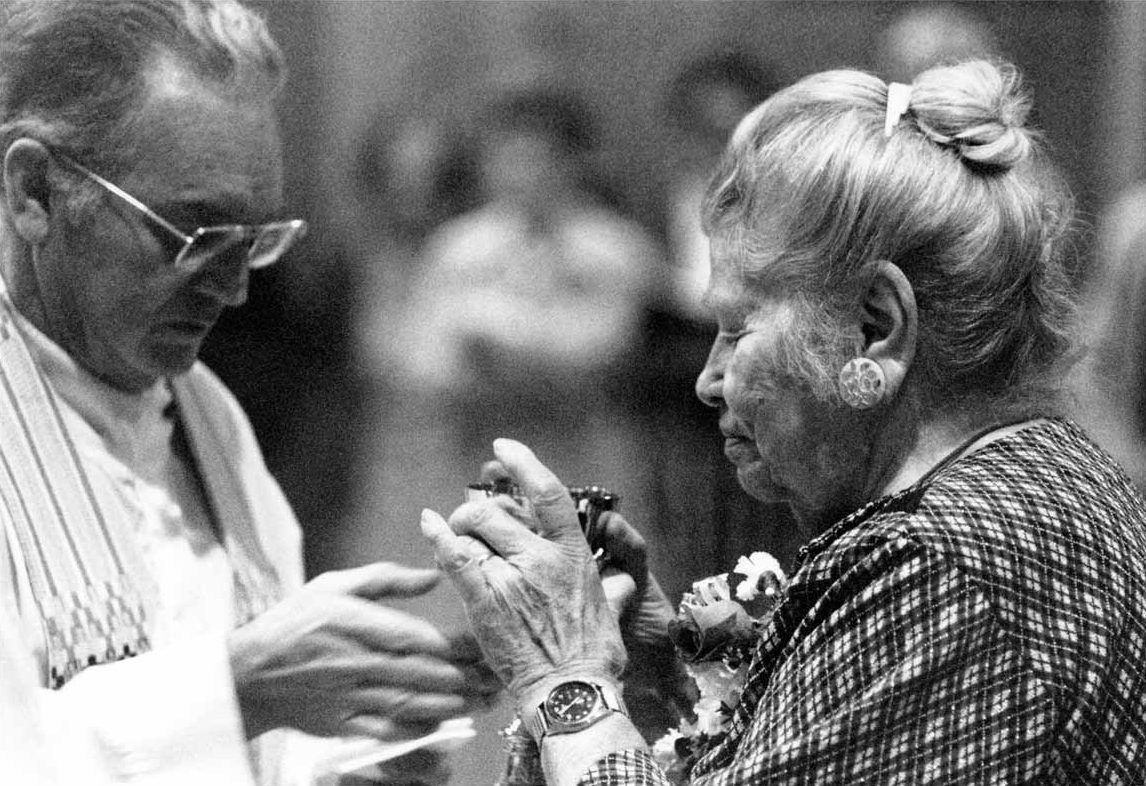This content has been archived. It may no longer be relevant
It has been a very hard year in the Church (in case you hadn’t noticed). It’s been a hard year to be a Catholic, beset with scandals on all sides—with distressing and depressing stories filling the news and with no end in sight.
It’s been a year when a significant number have decided they just have had enough.
We all probably know at least a few people who have just decided it’s all too much, and have walked away from the Catholic Church, at least in part because of all the scandals of sexual abuse among the clergy and the woeful failure of Church leaders to address same.
In the midst of all this, it has been hard for those of us who are not walking away, to even ponder the larger subject of the Church, to talk about it, to remember what we believe about it.
The sacrament of salvation. The people of God. The Mystical Body of Christ. The spotless Bride of Christ. All these are the language of our Catholic faith about the Catholic Church. In a time when there have been many ‘”spots,” to put it delicately, in plain evidence, in every corner of the Church, how do we dare speak of such things?
What does it mean to “believe in one, holy, catholic, and apostolic Church”? How do we understand our call to love the Church, to be loyal to Her, in these trying times?
It’s all very painful, and some of you may well be among those who have been tempted, or even have chosen, to walk away from the Church.
If you are, I assure you of my prayers, my love, and (while I remain absolutely committed to my own Catholic faith and identity) my great sympathy.
I am not going to address the challenges of reform in the Church. All the varied needs (and they are indeed needs) of systemic change at multiple levels of the Church are beyond both my competence and my authority. Much has been done; much still needs to be done; but that is not what I am going to write about.
Instead, I want to focus on what I believe is the first question: what does it mean to love the Church? After all, if we don’t love Her, we won’t bother to do whatever needs to be done to repair Her, will we?
We won’t bother to stay, won’t bother to do the hard work of healing the grievous wounds She carries at this time, won’t bother…. Well, we just won’t bother.
Either we’ll walk away, or we’ll stay out of a sort of apathy or sullen acquiescence: “Well, I really like the Eucharist, so I guess I have to put up with the rest of it.”
Lately, I have turned (as MH members are wont to do) to the writings of our foundress Catherine Doherty on the subject.
Catherine had a flaming love for the Church; at the same time, she had no illusions about the perfections of its members. She had a penetrating vision of the Church’s beauty in spite of its members’ sins.
It is that word beauty that is the key thing. How do we love the Church? By beholding the beauty of it. Without beauty, we cannot fall in love. If we recapture our sense of the beauty of the Church, then we will find within ourselves the resolve to do what needs doing, and the wisdom to do it well and with faithfulness to the Builder’s plan.
I want to share words from Catherine about the Church, words that have unfolded that beauty to me.
In future articles I hope to share with you her painful awareness of the wounds and brokenness in the Church, and her own sense of how we—any faithful Catholic—can heal and restore the Church to its original beauty.
But first, this is from a talk Catherine gave on October 1, 1976:
***
“We don’t know the Church: we only know the leaders of the Church—the pope, the priests, the bishops—and the way it is governed. And, as we look at it, we don’t like it …
“We don’t like this priest—Father X, Father Z. He’s this, that, and the other thing. The pope can go and paddle his [own] canoe.
“So, on and on, we discuss people who run the Church. But we haven’t yet come to the mystery of the Church. We are the Church, the people of God …
“There is a tremendous mystery about the Church. There is another Church, of which we are the Body and Christ is the Head, a Church that comes from the very heart of the Lord, given to us to come close to the heart of the Father.
“A mystical Church. A Church composed of saints and sinners. But, yet, a Church which is a prayer—a Church that lifts itself up from the hearts of men unto the heart of God.
“It is mysterious and mystical, for “mystical” means “mysterious,” because it’s so incredible.” Twelve people followed Christ. One of them sold him down the river. The others denied him: they weren’t particularly admirable men. But, on them, he built his Church.
“Strange, that when he met Peter after the Resurrection, he said: “Do you love me, Peter?” three times. And that sums up, in a sense, the Church. “Yes, Lord, I love you”.
“We haven’t been taught what the Church is. We, who make up the Church, do not understand the Church. And it is a moment of weeping when we drop out … But, how we need the Church! How we need it! It’s beyond understanding…
“Do you ever consider the loneliness [of our times]? When men cry out to be heard by someone—anyone!
“Our house in Ottawa, last year, listened to hundreds of people. People came and came and came, and they poured out their sorrows and their needs and their tragedies, and their loneliness, especially.
“Yet, around the corner from our house is a beautiful cathedral. There is One there who listens better than anyone can. Do they go there? Not anymore. Not until someone has listened to them.
“Not until you have taken them by the hand, as it were and guided them to the mysterious, strange, incredible expression of God’s love—the Church …
“For the Church is a prayer; the Church is a song. The Church is the tears of all mankind. The Church is the smile of a child; the Church picks up the last look of the dying man or woman. All these things are in the bosom of the Church. Because, all those things are in God. And God brought forth the Church…”
***
That’s just one example of many of Catherine’s writings about the Church that I could share. Isn’t it beautiful?
I don’t know anyone else who talks like that.
The Church arose, not from some mere human plan or even from simply utilitarian considerations.
It arose from God’s will to save his people. And the Church, in the fullest and most total sense of the word, is this movement of God into the world, fashioning a body of people who are at least beginning, or at the very least called to begin, to live the Trinitarian life.
A genuine reality being fashioned, a reality called ‘”Church,” a reality of humanity beginning to live what it was meant to live from its creation—the divine life.
And mysteriously, while this movement of God extends beyond the visible boundaries of the Catholic Church for sure, the Church is a visible reality, that concrete thing we all call “the Church,” either with faith and love or with disdain and anger.
It is a strange action of God making human beings a community of love, a vessel of the Trinity. The Body of Christ, because Christ is this. The Bride of Christ, because the Church receives it from him as a gift of love. This is what Catherine saw and meant by “Church.”
And so, the first thing we need is this beautiful vision of the Church. If we don’t have a vision of the Church that makes us fall in love with Her, we won’t bother to try to mend what needs mending or to heal what needs healing.
If we just get stuck on this pattern of systemic abuse or that painful history of silence or abuse of power, and never return to gaze upon the reality itself—God fashioning for himself a people who together bear his life into the world, and from that creating a place where the compassion and mercy of God can be found for all—then we won’t be able to do much to heal the Church.
No, we have to fall in love again with God’s beautiful plan, contemplate it at length, and then we may know what we, at least, are supposed to do to implement it.
to be continued





